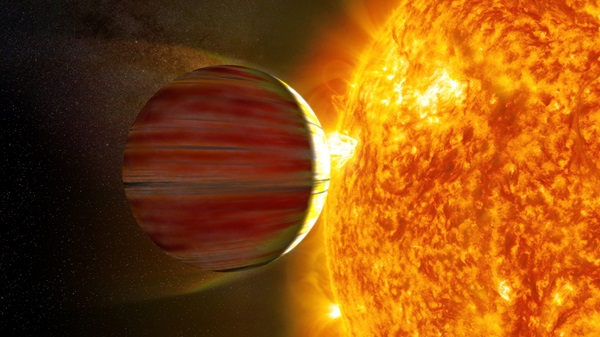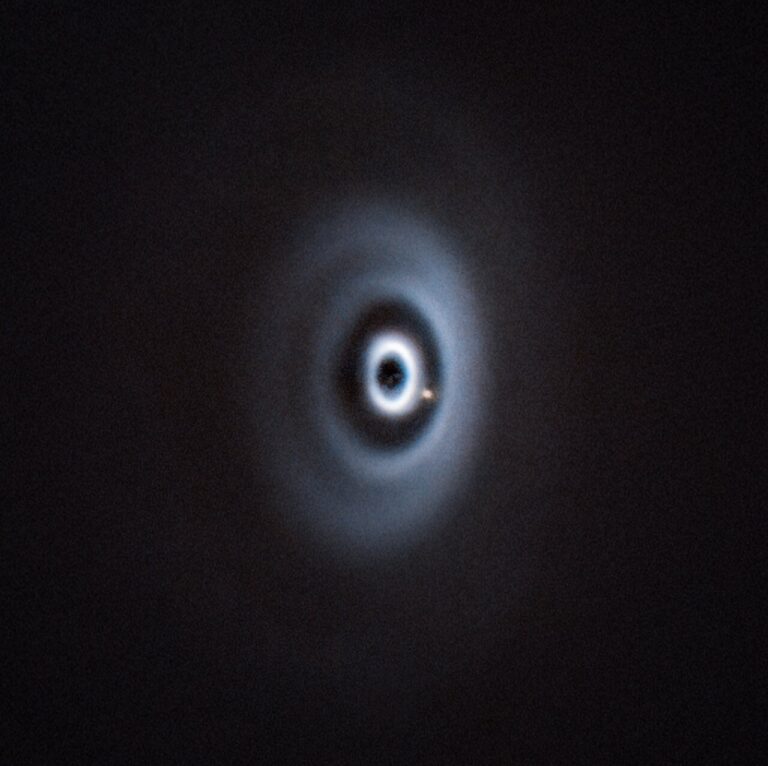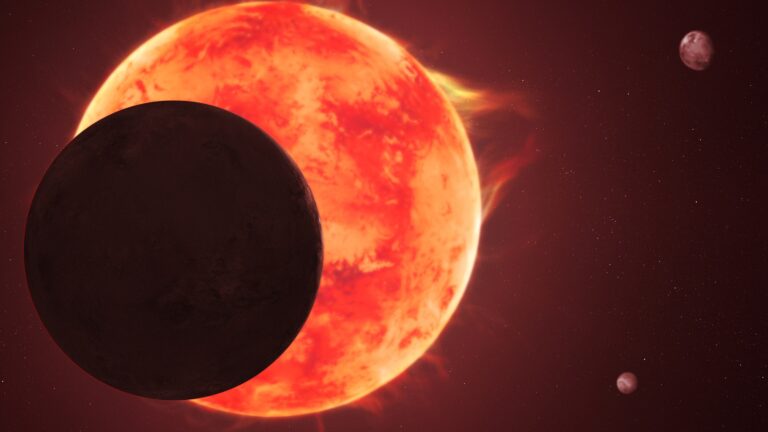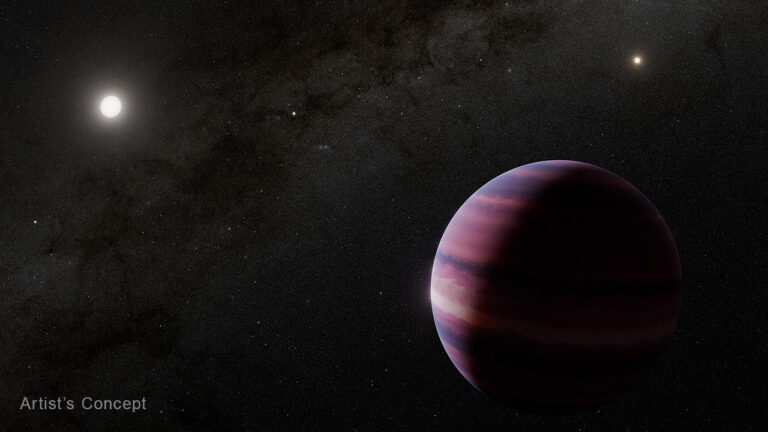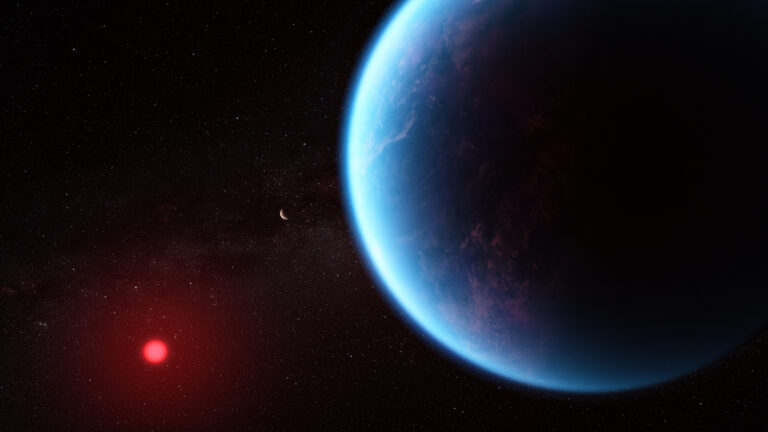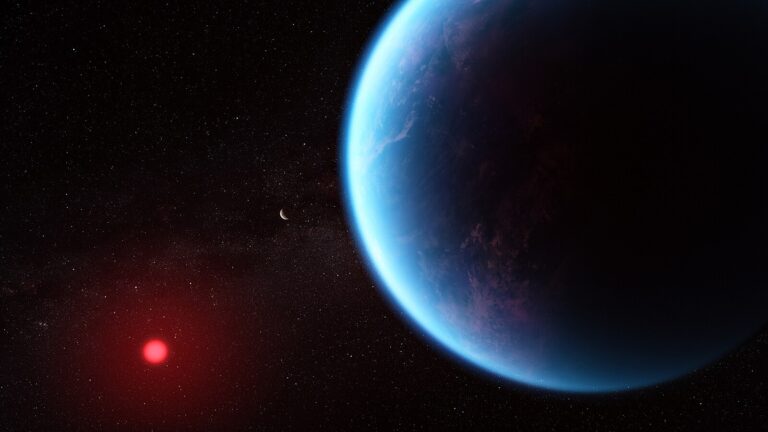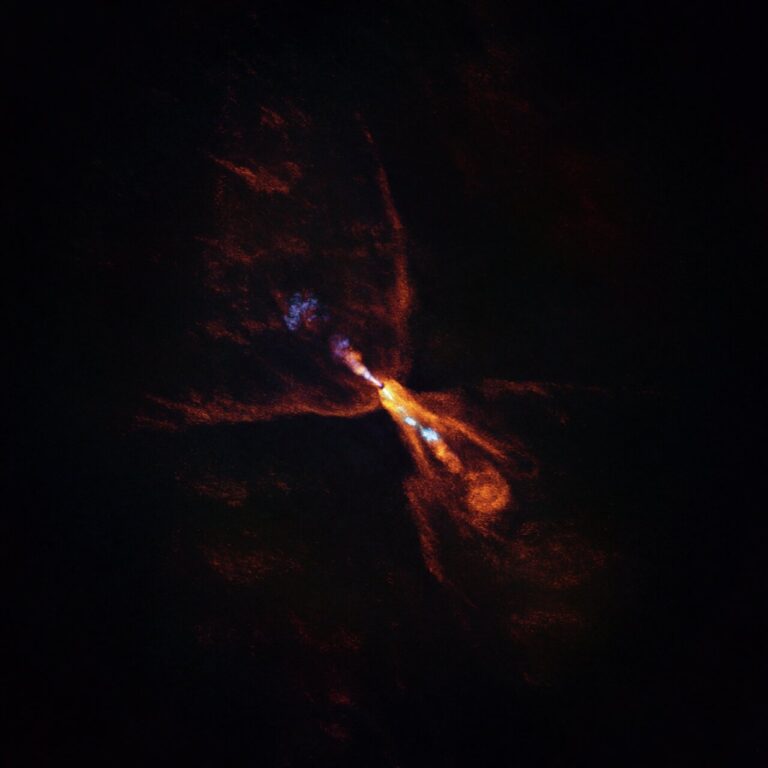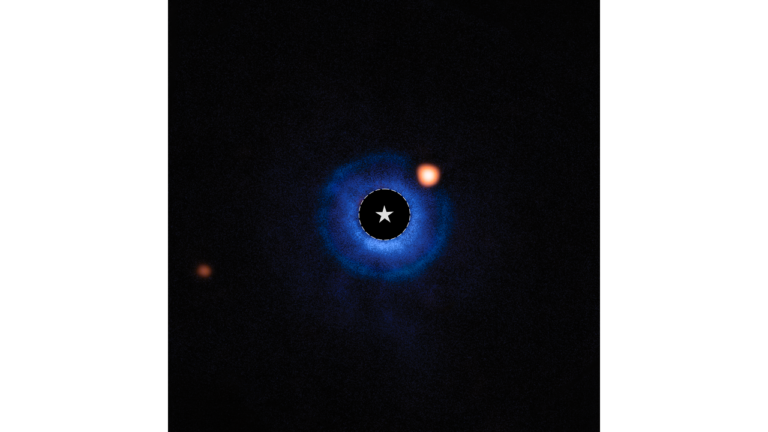Key Takeaways:
- HAT-P-67 b, a gas giant exoplanet, is currently the widest known, with a diameter exceeding twice that of Jupiter.
- Despite its large diameter, HAT-P-67 b possesses less than 60% of Jupiter's mass, resulting in an exceptionally low density among discovered planets.
- Its close orbital proximity to its star (4.8-day orbital period) leads to extreme radiative heating, causing atmospheric expansion and ionization.
- Future observations are anticipated to reveal more about its expanding exoatmosphere, influenced by the star's evolution into a red giant, leading to increased radiative heating.
HAT-P-67 b is 2.08 times the diameter of Jupiter (which has an average diameter of about 88,850 miles [143,000 kilometers]), but HAT-P-67 b is less than 60 percent of Jupiter’s mass. This makes it the least dense planet discovered so far. The large diameter is likely due to the planet’s proximity to its star. Gas giant planets like HAT-P-67 b experience extreme levels of radiation. High-energy X-rays and ultraviolet light from the star ionize the outer gaseous atmosphere of the planet, stripping it of electrons and causing it to heat up and expand. The heated outer atmosphere also begins to escape. This hot, escaping gas is called the exoatmosphere.
HAT-P-67 b was discovered in 2017, so measurements of the hot, ionized exoatmosphere have not yet been attempted. However, the size of the exoatmosphere of other hot Jupiter planets like HD 209458 b (the first transiting planet ever discovered) can be 10 times larger than the already inflated atmosphere. HAT-P-67 b’s star is evolving into a red giant, so it is brighter than it was in the past. Its increasing radiation will cause more heating and more expansion of the planet’s atmosphere in the future.
Leslie Hebb
Assistant Professor, Department of Physics,
Hobart and William Smith Colleges,
Geneva, New York

